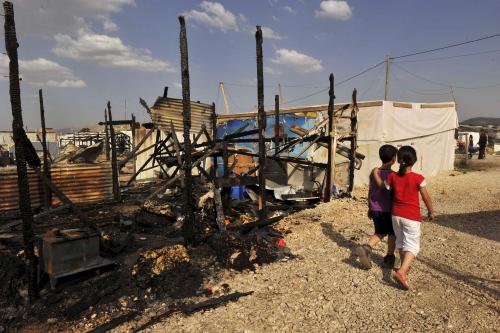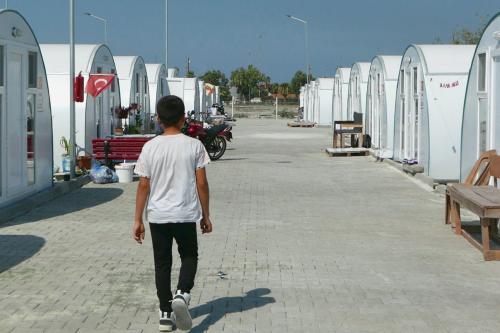For some time now, Egyptian officials at the highest level have been pointedly underlining a growing refugee and migrant challenge. At the G-20 meeting in September 2016, President Sisi stated that Egypt was hosting 5 million refugees and immigrants. At Suez Canal University this summer he had noted that this figure included some 500,000 Syrian refugees. A more pointed appeal came this August by Assistant Foreign Minister Hisham Badr at the European Parliament, who stated that the European Union-Turkey 6 billion euro refugee deal was responsible for the increasing numbers of refugees in Egypt.
It is true that the narrative on Syrian refugees most often focuses on Jordan, Lebanon, and Turkey with their numbers of approximately 1.1 million in Lebanon, 640,000 registered but close to 1 million in Jordan, and 2.7 million in Turkey. Egypt usually gets a passing reference for the 114,000 registered Syrian refugees as of July 2016. The United Nations High Commissioner for Refugees puts the total number of refugees, asylum seekers, and stateless people (“people of concern”) in the country at around 250,000. Aside from Syria, refugees come from, among other countries, Iraq, Ethiopia, Somalia, South Sudan, and Eritrea—all in numbers below 7,000 except for 28,000 Sudanese. These numbers refer to registered refugees; actual numbers are generally higher. In 2013, the Egyptian government estimated somewhere between 250-300,000 Syrians, including registered refugees, in Egypt. These numbers had not changed much by early 2016, according to reliefweb.
The Egyptian government’s claim of 500,000 Syrians in Egypt is currently not reflected in a spike in the number of registered refugees nor does it immediately accord with the difficulty Syrian refugees have in entering Egypt, especially so after the ouster of President Morsi when the political climate turned sharply against Syrians who were accused of supporting the Muslim brotherhood. In 2015 registered Syrian refugees decreased from 138,000 to 117,000. Tadamon, the Egyptian Refugee Multicultural Center, estimated in 2015 that 10,000 Syrian refugees went to Turkey, hundreds were resettled in the West and many chose to take the perilous Mediterranean route to get to Europe.
So whatever the reality of the actual numbers of refugees in Egypt, the key to the 5 million number lies in the government’s reference to refugees and immigrants. These figures in the millions have been around for decades, largely referring to Sudanese immigrants. A Carnegie piece from 1999 notes the presence of 3 million Sudanese, while a 2006 American University in Cairo report mentions that Egyptian officials quote between 3 and 4 million, and the Canadian government has stated 2-5 million as does a 2011 report from the Egyptian Initiative for Personal Rights (EIPR).
EIPR also notes that the Egyptian government underlines the special status of Sudanese in Egypt noting that the Sudanese population “does not fall into the category of asylum-seeking as understood in the legal and international sense.” Indeed, prior to 1995, the 1976 Wadi El Nil agreement between Sudan and Egypt and previous practices—a legacy of history—gave Sudanese access to education, health services, property ownership, and employment. This ended with the Addis Ababa assassination attempt on President Mubarak in 1995 with the perpetrators allegedly linked to the Sudanese government. The decision to treat Sudanese as other foreigners, however, was not enforced retroactively and an unknown number of Sudanese—likely in the millions—remained in Egypt.
The 2004 Four Freedoms Agreement once again gave a privileged status to the Sudanese. However, implementation has fallen short of its promise, and it remains virtually impossible for a new generation of Sudanese to formalize their status. Yet, many do still come as noted by the 28,000 registered refugees and the many more who disappear into Egypt’s cities and towns while others try to go to Europe or Israel.
In sum, the 5 million immigrants are mostly Sudanese, some of whom have lived in Egypt for generations. And the 500,000 figure likely overstates the number of Syrian refugees.










Commentary
Who are the 5 million refugees and immigrants in Egypt?
October 4, 2016